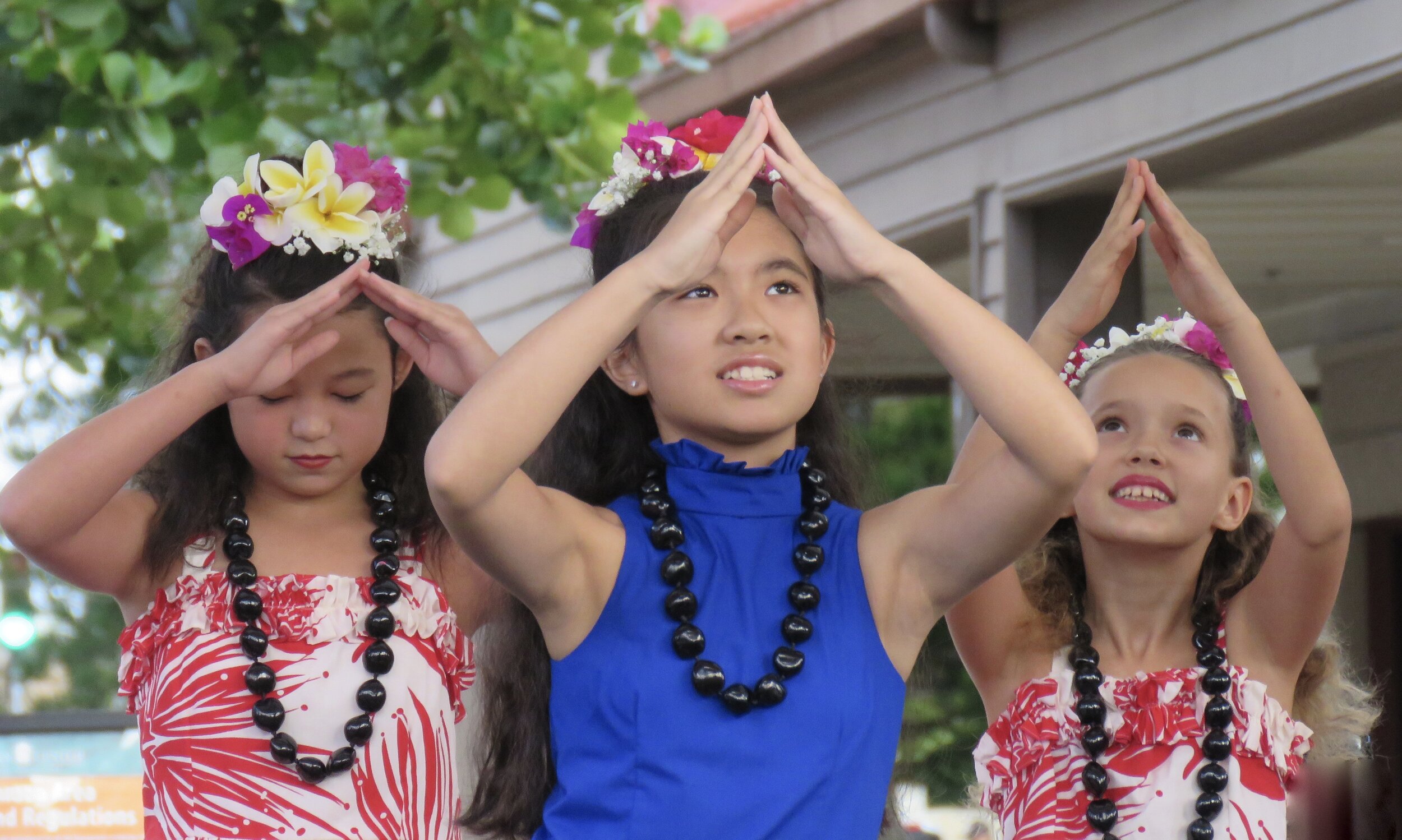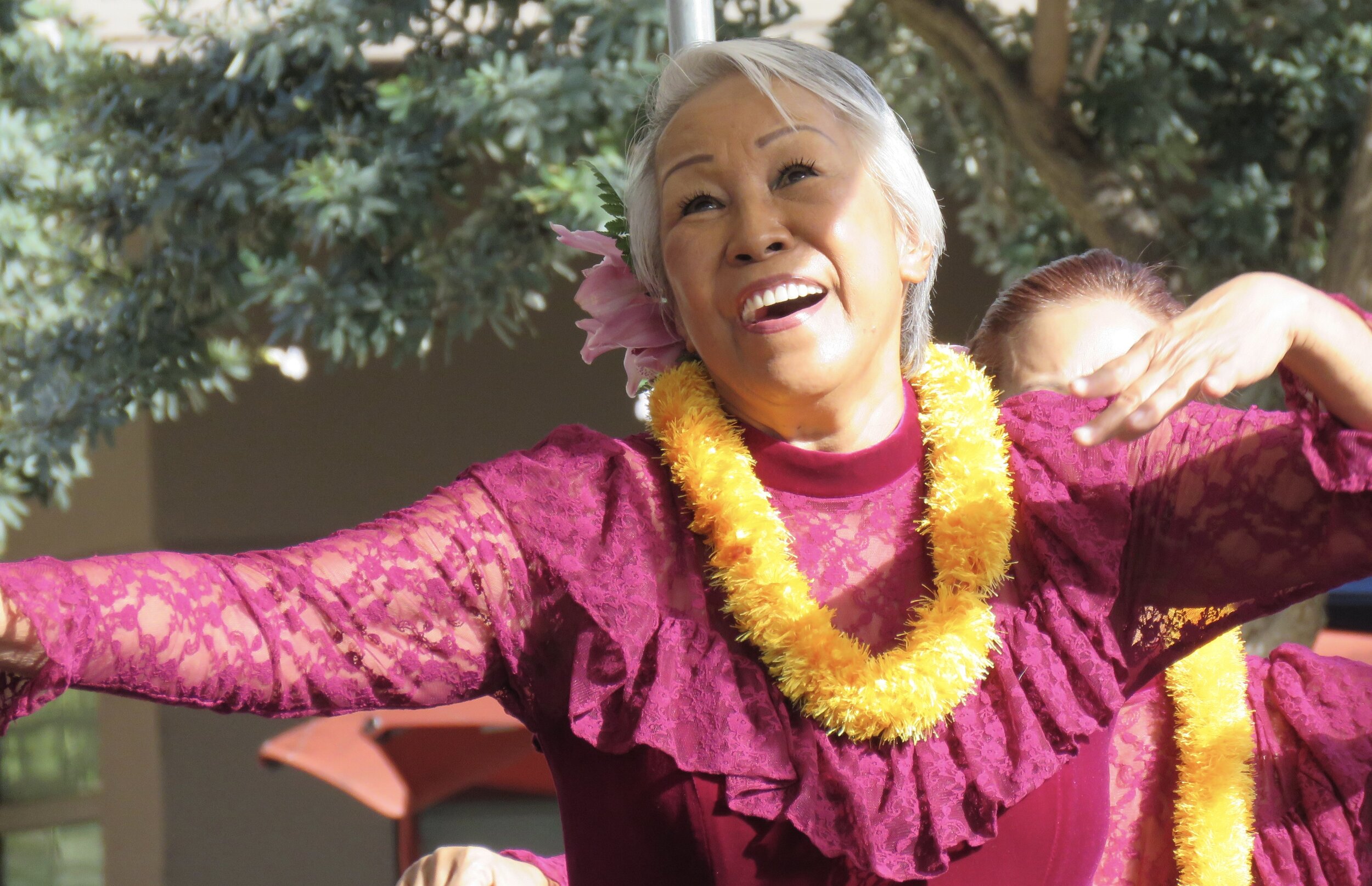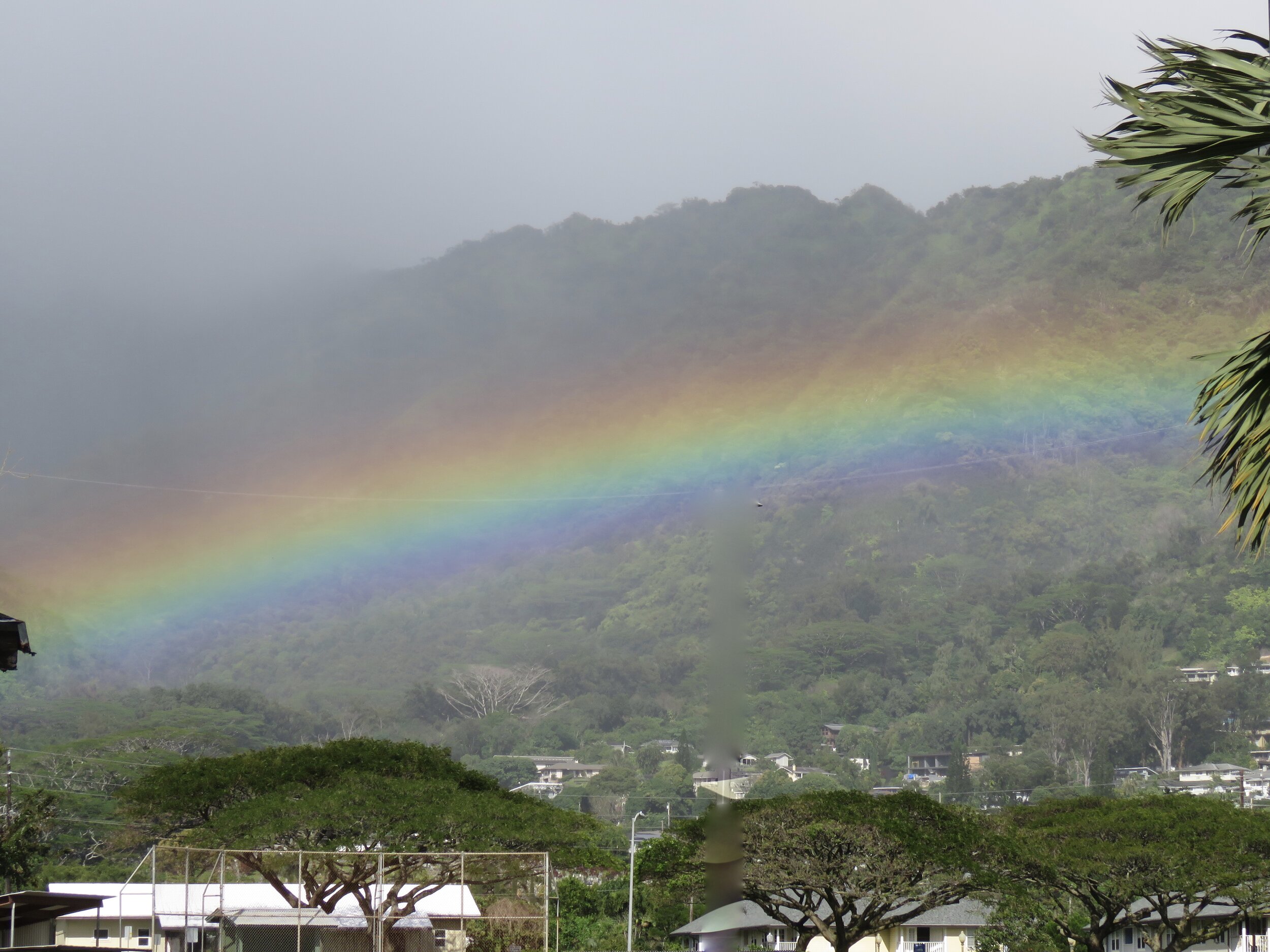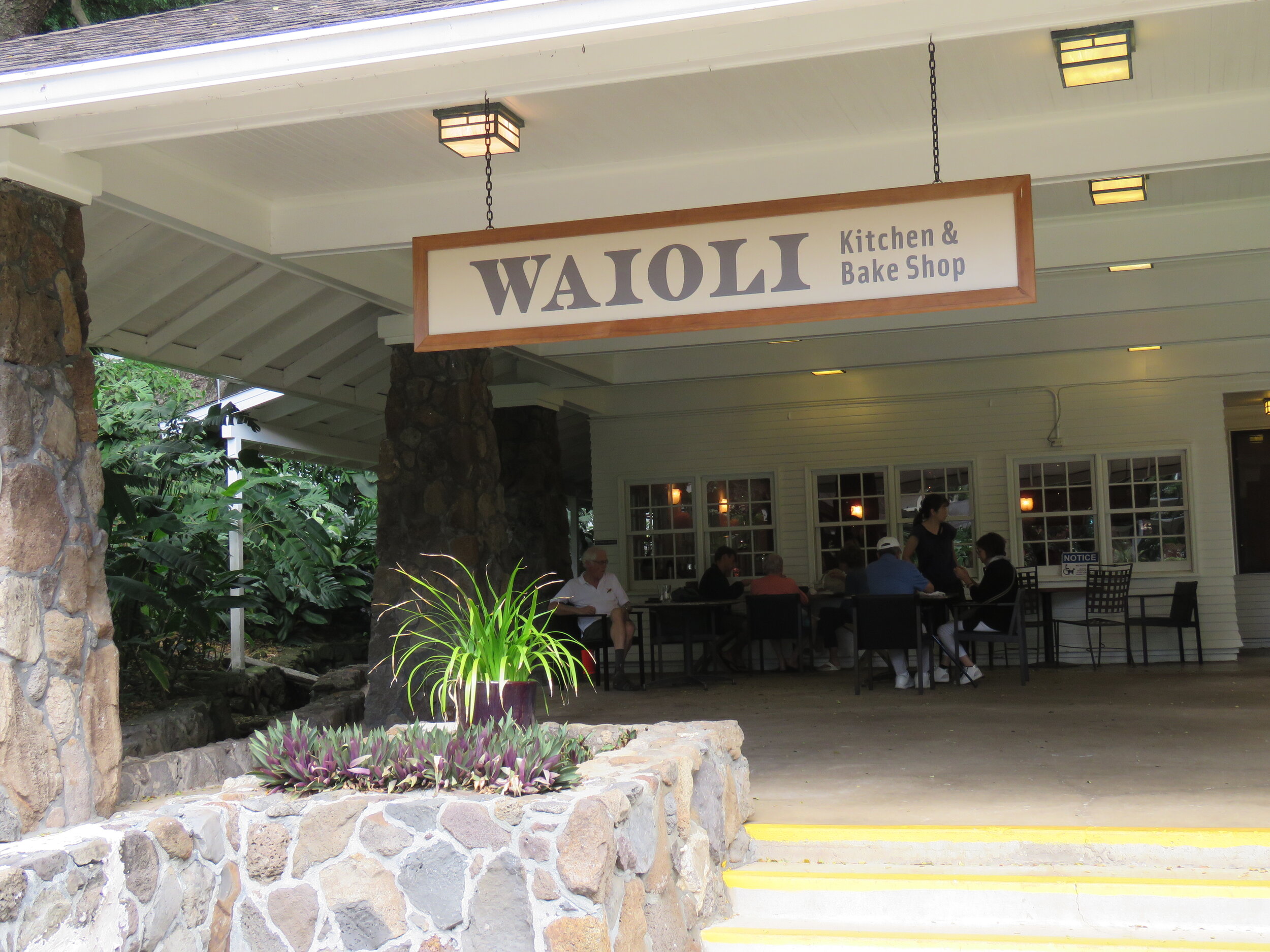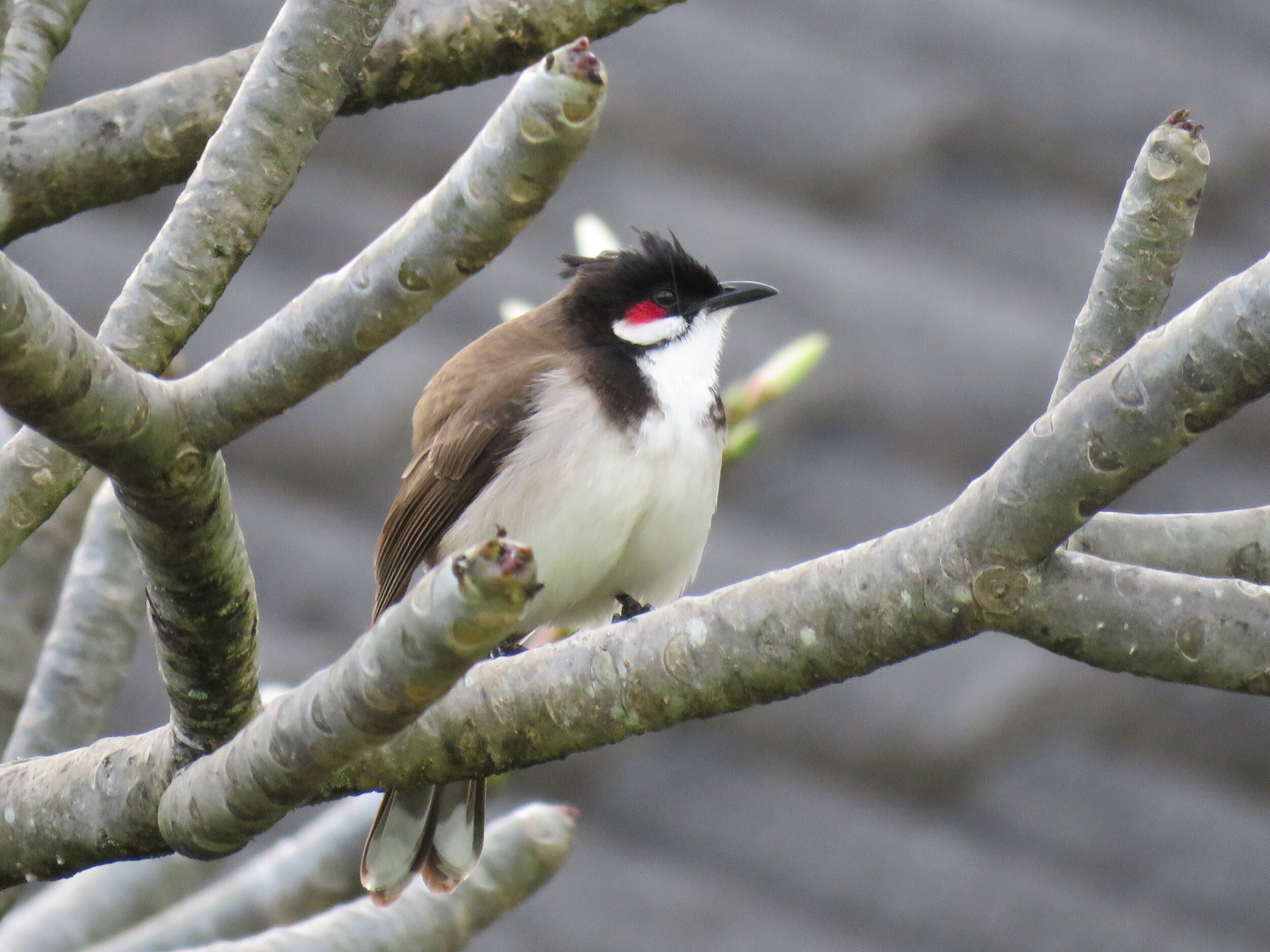We have traveled from Australia to Zambia, from Easter Island to Kazakhstan but never spent time in Hawaii. Sometimes I wondered if we were the only ones in North America who’d never been to Hawaii… As always, these two globetrotting grandparents travel on a budget, avoid crowds and don’t pretend to know a place after just a brief visit. We do, however, want to share the highlights of each place we visit and share what we discovered and how we did it.
Kalakaua, Ke’eaumoku, Punahou, Kapi’olana - I love the rhythm of Hawaiian names… Honolulu on the island of O’ahu is a big American city of 350,000 people. Together with surrounding cities like Waikiki, the county is home to close to a million people. That’s why we will encounter traffic jams and waiting lines when plunging into the sightseeing world of Hawaii. So we plan our day trips here carefully because we’re allergic to crowds and touristy attractions.
We are so lucky to be staying in Manoa Valley, a green and quiet neighborhood flanked by towering, volcanic walls. The lush green rain forest is fed by… well, rain. We are here in February and have had at least a bit of rain, almost every day. But the showers are warm and usually short lived.
Free public pool.
Unfortunately many of the hiking trails along those green mountain slopes are closed because they are too muddy or have been washed out. I also think that the effect of cuts of federal funding is becoming more and more noticeable: both national and state park websites are outdated, and trails that were supposed to reopen after construction in 2019 are still closed. The city, however, serves its public well: as far as I can find out all public swimming pools on Oahu are free. Every day I enjoy a free swim in the Olympic sized Manoa Public Pool, with hot showers to boost.
Being in Hawaii, you really want to hear Hawaiian music and see authentic dancing, right? But I wasn’t about to pay well over $100 per person for a tourist luau. These dance performances are offered in many large hotels along the Waikiki waterfront. Yet, I wanted something more… real, local. Searching the online event calendar I discovered that the Mililani Shopping Center, about a half hour drive away, was hosting authentic Hawaiian music and dancing. A shopping center was not the most scenic back drop but the event itself was fabulous. And free. For two full hours we were treated to hula dancing, music and stories by performers of all ages, and the audience was by and large local families.
Another, less lively, free attraction that we much enjoyed was a stroll through the Chinese Hawaiian Cemetery. There’s also the National Cemetery and the O’ahu Cemetery. These parklike settings offer - besides fascinating graves - interesting statues, towering trees and gorgeous flowers and bird life. The pink, yellow and white blossoms of the frangipani trees try very hard to make up for the ugly tree it grows on. With its winter bare branches, the tree itself looks dead. Its flowers, however, are a glorious sight and produce the most amazing fragrance. My favourite tree here is the monkeypod tree. These giant umbrellas, given space, can have a diameter of about 30 meters. Their intriguing branch patterns are gorgeous and it proudly shelters a huge area of lawn.
The other awe-inspiring tree here is the banyan tree. These monsters can be enormous: one of the most famous Oahu banyan trees is the majestic giant at the historic Moana Hotel on Waikiki Beach. Planted in 1904, the tree now reaches 75 feet high and 150 feet across while long, rope like roots dangle down its grey trunk.
It’s good to have a car on O’ahu. Unless you are staying in one place on the beach with no intention of seeing the rest of the island, a car is the best option to getting around. Public transit is here but not very efficient to get around the island.
First we drove the loop from Waikiki to the south shore, along several beautiful beach parks. Parking was hard to find since we weren’t the only ones exploring the coast. So we passed a few beaches until we found one with empty spots. We drove around Koko Head, enjoyed a stroll on Makapuu Beach and dipped our toes in the ocean. Not all beaches in Hawaii are made for swimming so it’s a good idea to check signs. There are dangerous undertows in many locations. We continued north to Bellows, then took Highway 61 back, a loop we could have driven in an hour but enjoyed sauntering along for much of a day.
Honolulu’s Koko Head crater.
We returned to Koko Head a few days later to hike the trail in this crater. An ancient volcano, Koko Head is a sheltered bowl with a nice hiking trail in a botanical garden. I learned more about the trail on this great website site:
It describes the location, the parking and the trail in detail. We found it to be very accurate and enjoyed walking among the variety of trees and shrubs here, even recognizing trees and blossoms we had seen in Africa. Too bad there are no elephants in the crater - they would have loved the fruit of the sausage trees and the large blossoms we saw them devour in Tanzania.
The view from the top.
Tux and shorts…
The most hilarious thing we saw in the botanical garden was a bride and groom having their wedding pictures taken. No mistake about this being Hawaii: the groom wore a black suit with bowtie and shorts…
I could have bought a t-shirt that would have told the world from now on that “I climbed Diamond Head”. I didn’t buy the shirt but felt good making it to the top of this ancient volcano edge, following in the distant dust of my hiking husband. He wasn’t even panting while I hauled myself up the trail that gained nearly 600’ in elevation, has hundreds of steep stairs and a tunnel. And then you have to crawl out of the top ‘bunker type’ part to see the view… But the views of ocean, cities and island were worth it. Especially when I got fresh pineapple juice at the end.
Next we drove north along the west coast. First it was a matter of getting around the metropolis and away from traffic and high rises. Then we enjoyed the laid back drive north to Waianae and Makaha. In the last town we bought Hawaiian BBQ from a fast food stand to eat on the beach.
Finally, on a third day, we drove the largest loop from Waikiki/Honolulu north on the Kamehameha highway to Haleiwa. The north shore reminded me of California in the 70’s with surf shacks, Volkswagens and hippies on surfboards. The famed Pipeline beach was crowded with surfers but the waves were not nearly as high as I’d imagined. I guess it differs with wind and weather.
We continued a pleasant, slow drive along the north side of O’ahu, decided to pass on the church-affiliated Cultural Centre (we watched videos of it and it seemed just a bit too touristy). We did enjoy many white sand beaches with tall palm trees. The volcanic, green slopes coming down to the ocean were spectacular on the east side of island - probably our favourite coast. We are amazed at how small the island really is. It’s easy to see the entire island, given enough time and a car.
Being in Honolulu and not going to see the historic Pearl Harbour Memorial site is like going to Paris and not seeing the Eiffel Tower. Before we visited this National Historic Park, we watched this YouTube about World War II and the attack on Pearl Harbour: https://www.youtube.com/watch?v=XnQ_6h3VtRo And we found it very beneficial to have seen this before going.
From it we learned the exact location, the opening hours, the fact that you need a ticket but tickets are free and much more. The hardest part is having to get up at 6 AM. Tickets are being handed out starting at 7 AM and are attached to a time slot so you may have to come back later in the day.
We planned our visit for a Monday morning and were lucky: after standing in line for only 15 minutes, we were handed tickets for the first time slot at 7:30.
This model of the Memorial shows the size of the sunken ship.
First, you visit a theatre to watch a movie, much of it authentic footage which I found very impressive. Because, let’s face it, this was a surprise attack that no one was expecting. Yet, on both the American side and the Japanese side, there is all this footage that makes into a complete documentary of what was happening.
Like the war in Holland, the numbers of the dead, the heroic deeds, the number of planes and ships involved, are all staggering. Of the ships that sank at the tropical, picturesque site of Pearl Harbour, the one that took most lives was the S.S. Arizona. Made of thick steel, it was impossible to rescue the men on board. The ship was left were it sank.
Eventually the National Park Service and US Navy erected a plain white, ship-shaped hall width-wise over the rusted remains. It’s a sober place to visit where the fact that this was a world war, not just a European tragedy, was really brought home to me.
After visiting the site, by boat, we walked through the museum. Besides the usually models, maps, videos, and artifacts my favourite display here was that of Sadako’s paper cranes. An original of the thousands of paper cranes that have inspired children around the world to talk about peace, is on display.
Our very favourite place in Honolulu’s Manoa Valley became the Waiola Kitchen. We walked several times to this grand old building with its wrap-around verandas, nestled among monkeypod trees, and savoured a great breakfast or lunch. Not only is it great food and a beautiful atmosphere, the kitchen and restaurant are run by the Salvation Army and used as vocational training for disadvantaged people. A great win-win situation. If you are every in Honolulu, treat yourself to a meal in this great place: https://waiolikitchen.com
https://dlnr.hawaii.gov/dsp/parks/oahu/diamond-head-state-monument/
https://dlnr.hawaii.gov/dsp/hiking/oahu/diamond-head-summit-trail/
The website of the Pearl Harbour Memorial Park answers most if not all questions a visitor might have: https://www.recreation.gov/ticket/facility/233338
I wrote an article about this teacher and her class who produced interpretive signs for Diamond Head: https://www.google.com/url?sa=i&url=https%3A%2F%2Fwww.youtube.com%2Fwatch%3Fv%3DrIFIF1buM9g&psig=AOvVaw2_Kn5b4C4Yvgap_o__Lo9j&ust=1582687188579000&source=images&cd=vfe&ved=0CAIQjRxqFwoTCPim-LTf6-cCFQAAAAAdAAAAABAD
For more details on Sadako’s paper cranes see: http://www.onethousandpapercranes.org/iPearlHarbor
https://www.japantimes.co.jp/community/2018/08/01/issues/60-years-sadakos-death-story-behind-hiroshimas-paper-cranes-still-unfolding/#.XlSEKC2ZPdQ







